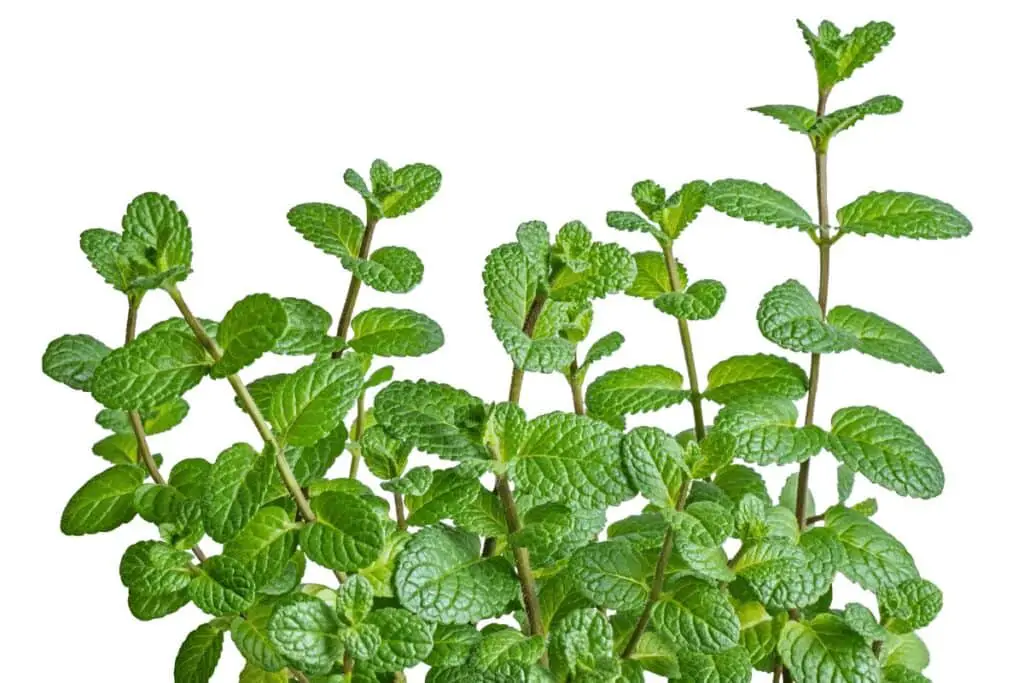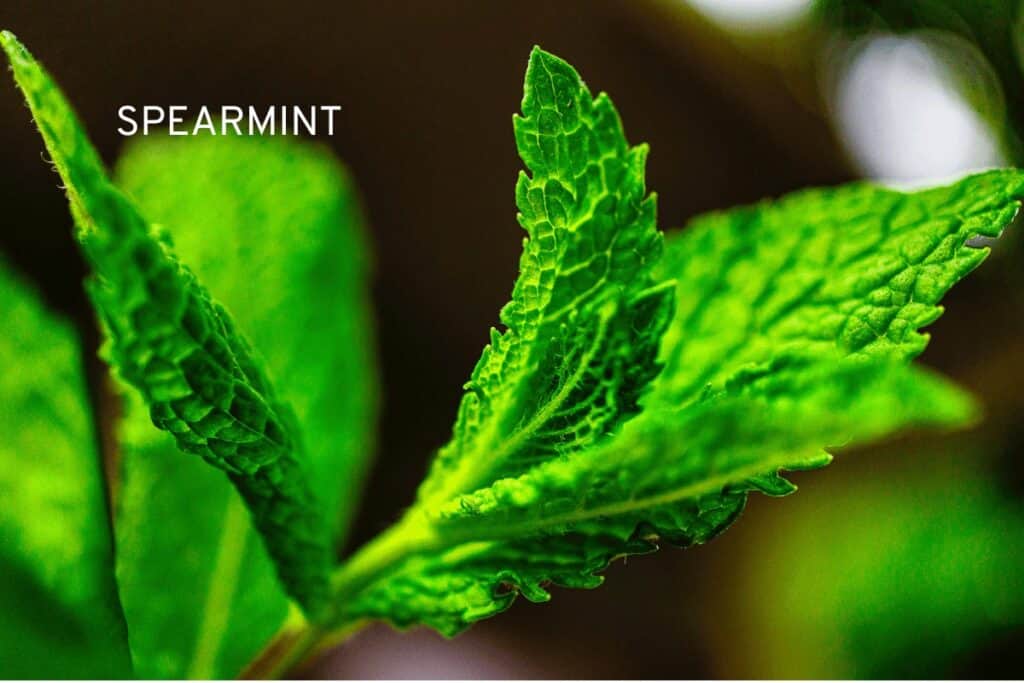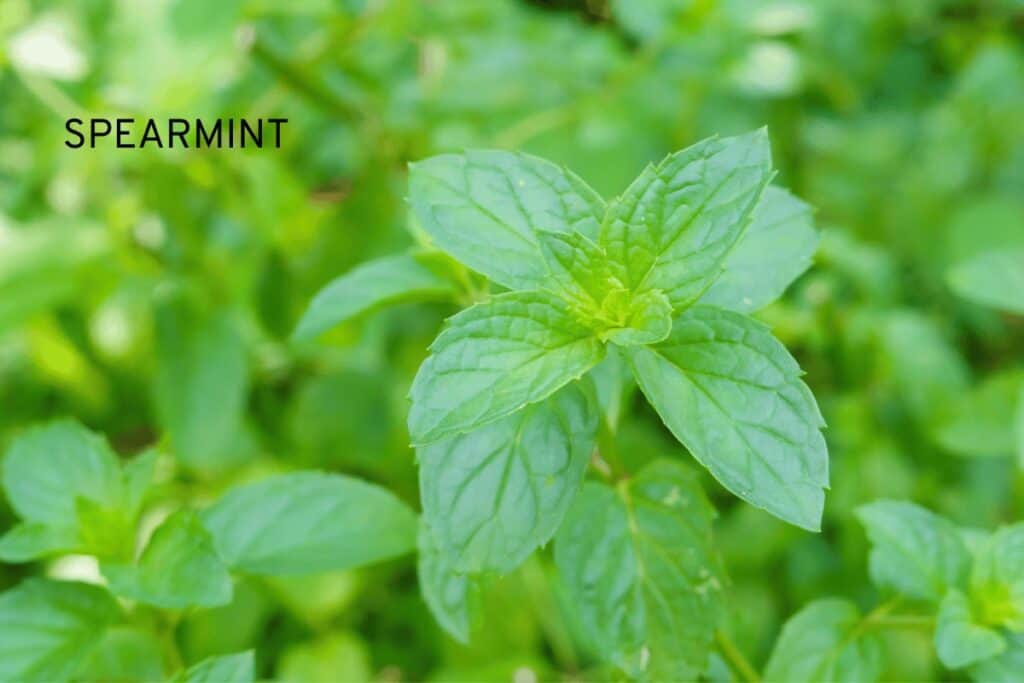Quick Answer
Mint and spearmint are two popular herbs that are widely used for culinary and medicinal purposes. While they belong to the same genus, they differ in their species and chemical composition. In this article, Mint vs Spearmint: What Is The Amazing Difference? we aim to provide a comprehensive overview of the differences between mint and spearmint, their uses, and their health benefits.
Mint and spearmint are both members of the Mentha genus and are known for their distinct aroma and flavor. They are popular herbs that have been used for centuries in a variety of culinary and medicinal applications. While they are often used interchangeably, there are some significant differences between the two herbs that are worth exploring.
What Is Mint?

Mint is a general term used to describe the plants that fall into the Mentha genus. It is a perennial herb that is native to Europe and Asia but has since been cultivated in various parts of the world. It is known for its aromatic leaves and is commonly used in teas, salads, and other culinary applications.
Types of Mint
There are several types of mint, including:
Peppermint (Mentha piperita)
Spearmint (Mentha spicata)
Apple mint (Mentha suaveolens)
Chocolate mint (Mentha x piperita ‘Chocolate’)
Corsican mint (Mentha requienii)
Spearmint

Spearmint
Mint Spearmint Mint 200 Perennial Root Flower Seeds
Chocolate Mint

Chocolate Mints
Rau Hung Cay Culinary Herbs Mentha Perennial Herb Easy to Grow, Plant, Seasons,
Corsican Mint

Corsican Mint
Mint Mentha Requienii Herb Fragrant Ground Cover Flower Seeds + Gift
Flavor and Aroma

Mint has a refreshing, cool, and slightly sweet flavor and aroma. It is often described as having a “minty” taste and is commonly used to flavor chewing gum, toothpaste, and other oral hygiene products.
Uses of Mint
Mint is widely used in culinary applications and is commonly used to flavor teas, cocktails, and desserts. It is also used as a garnish for dishes such as salads and soups. Additionally, mint has been used in traditional medicine for its anti-inflammatory, antimicrobial, and digestive properties.
Health Benefits of Mint
- Mint has several health benefits, including:
- Relieving digestive issues such as bloating and indigestion
- Reducing inflammation in the body
- Improving oral health and freshening breath
- Relieving headaches and migraines
- Promoting healthy skin
What is Spearmint?

Spearmint is a specific species within the Mentha genus, known as Mentha spicata. It is a perennial herb that is native to Europe and Asia and has been cultivated for centuries. Like mint, it is known for its aromatic leaves and is commonly used in culinary and medicinal applications.
Origin and Species
Spearmint is a natural species of mint, meaning that it is not a hybrid like a peppermint. It is native to parts of Europe and Asia and has been cultivated for centuries.
It is also known by several other names, including common mint, garden mint, and lamb mint. Spearmint, also known as common mint, garden mint, and lamb mint, is a perennial herbaceous plant that belongs to the Mentha spicata species [2].
It is native to Europe and Asia and has been naturalized in other regions, including North America and parts of Africa [1].
Uses of Spearmint
The leaves of the spearmint plant are used fresh or dried to flavor a variety of foods such as sweets, beverages, salads, soups, cheeses, meats, fish, sauces, fruits, and vegetables [1].
Moreover, aromatic oil called the oil of spearmint is also used as a flavoring and sometimes as a scent [2]. The flavor and aroma of spearmint come from a chemical called carvone, which gives it a delicate and sweet taste [2].
Health Benefits of Spearmint

Spearmint flavor is commonly used in chewing gum and toothpaste [3]. It is also used in a variety of other products, mainly confectionery, such as candy and ice cream.
Apart from its culinary uses, spearmint is also known for its various health benefits. It has been used in traditional medicine to relieve digestive problems such as bloating, gas, and nausea [2]. Spearmint tea has been found to have antioxidant properties that may protect against oxidative stress and inflammation [2]. Spearmint has also been shown to have antimicrobial and antifungal properties, which can help fight off harmful bacteria and fungi [2].
In conclusion, spearmint is a flavorful herbaceous plant that has a delicate and sweet taste and aroma. It is commonly used to flavor a variety of foods and products such as chewing gum, toothpaste, and confectionery. It also offers several health benefits such as relief from digestive problems, antioxidant properties, and antimicrobial effects.
Differences Between Mint and Spearmint
Chemical Composition
Peppermint and spearmint belong to the same family, Lamiaceae, but have different chemical compositions. Peppermint contains high levels of menthol, up to 40% [1], while spearmint contains less than 1% menthol [1].
Both plants also contain other compounds, such as carvone, limonene, and menthone, but in different proportions. These differences in chemical composition contribute to the distinct tastes and aromas of each herb.
Taste and Aroma
Peppermint has a strong, cool, and minty flavor with a slightly sweet aftertaste [1]. The high menthol content in peppermint provides a more intense flavor and aroma than spearmint [1].
Spearmint, on the other hand, has a sweet, refreshing, and slightly minty flavor [1]. Its aroma is milder than that of peppermint, with a slightly fruity note [1].
Culinary Uses
Peppermint and spearmint are popular culinary herbs used for their refreshing flavors in a variety of dishes. Peppermint is often used in sweet dishes like candies, chocolates, and ice creams, as well as in savory dishes such as lamb and pork.
Spearmint is commonly used in Mediterranean and Middle Eastern cuisine, especially in salads, tabbouleh, and meat dishes, as well as in teas and cocktails [2].
Medicinal Uses
Peppermint and spearmint have a long history of medicinal use. Peppermint has been used to treat digestive issues such as bloating, gas, and indigestion, as well as headaches and muscle pain [2]. Spearmint is often used as a natural remedy for nausea, vomiting, and headaches [1]. Both herbs are also used to make teas and essential oils for aromatherapy purposes [2].
In conclusion, while peppermint and spearmint may look similar and belong to the same family, they have distinct differences in chemical composition, taste, and aroma, for culinary and medicinal uses. Knowing these differences can help in choosing the right herb for a particular recipe or for medicinal purposes.
Conclusion Mint vs Spearmint: What Is the Difference?
After conducting research on the differences between mint and spearmint, it is clear that while they are both members of the same family, they have distinct differences in terms of their chemical composition, taste and aroma, culinary uses, and medicinal uses.
Spearmint is native to Europe and Asia and has a delicate, sweet flavor and fragrance that comes from the chemical carvone. Peppermint, on the other hand, has a sharper taste and is often used in candy and chewing gum due to its higher menthol content, which makes it more effective in treating digestive problems and headaches.
In terms of culinary uses, spearmint is often used to flavor savory dishes like chicken and salads, while peppermint is more commonly used in desserts. While both mints have some similar medicinal uses, peppermint is more effective as a natural remedy for digestive issues and headaches due to its higher menthol content.
It is important to keep in mind that both plants can spread easily in moist environments and can be considered invasive in certain circumstances. In conclusion, the differences between mint and spearmint are important to understand in order to use them effectively in cooking and natural remedies.
FAQS
Which is better mint or spearmint?
Mint and spearmint have different flavors and properties, so it depends on personal preference and intended use. Peppermint has a stronger flavor due to its higher menthol content and is often used for medicinal purposes. Spearmint has a milder, sweeter flavor and is more commonly used for culinary purposes. [1]
Can I use spearmint instead of mint?
Spearmint and mint are often used interchangeably in recipes, but they do have different flavors. If a recipe specifically calls for mint, it’s best to use mint. However, if you don’t have mint on hand, spearmint can be used as a substitute. [2]
Does spearmint taste like mint?
Yes, spearmint is a type of mint, but it has a milder, sweeter flavor compared to other mint varieties. [1]
Is spearmint tea just mint leaves?
Spearmint tea is made by steeping the leaves of the spearmint plant in hot water, so it is made solely from spearmint leaves. However, other types of mint tea can be made from different mint varieties. [2]
Why is spearmint better than mint?
There is no clear answer to this question as it depends on personal preference and intended use. However, spearmint is often preferred in culinary applications due to its milder, sweeter flavor, while mint varieties like peppermint are often used for medicinal purposes due to their higher menthol content. [1]
Is spearmint the same as common mint?
No, spearmint is a type of mint, but it is a different species from common mint (Mentha x piperita). Other types of mint include peppermint, chocolate mint, and apple mint. [1]
Does spearmint tea increase estrogen?
Studies have shown that spearmint tea may have anti-androgenic effects, which means it may reduce levels of androgens like testosterone in the body.
This can be beneficial for women with conditions like hirsutism or polycystic ovary syndrome (PCOS). However, there is no evidence to suggest that spearmint tea increases estrogen levels. [2]
Who should avoid spearmint?
There are no known specific groups of people who should avoid spearmint. However, as with any herbal remedy, it is best to consult with a healthcare professional before using it regularly, especially if you have a medical condition or are taking medications. [2]
Who shouldn’t drink spearmint tea?
Spearmint tea is generally considered safe for most people to drink in moderation. However, it is not recommended for pregnant women, as it may affect hormone levels. Additionally, people with gastroesophageal reflux disease (GERD) or a history of kidney stones should avoid spearmint as it may exacerbate symptoms.




